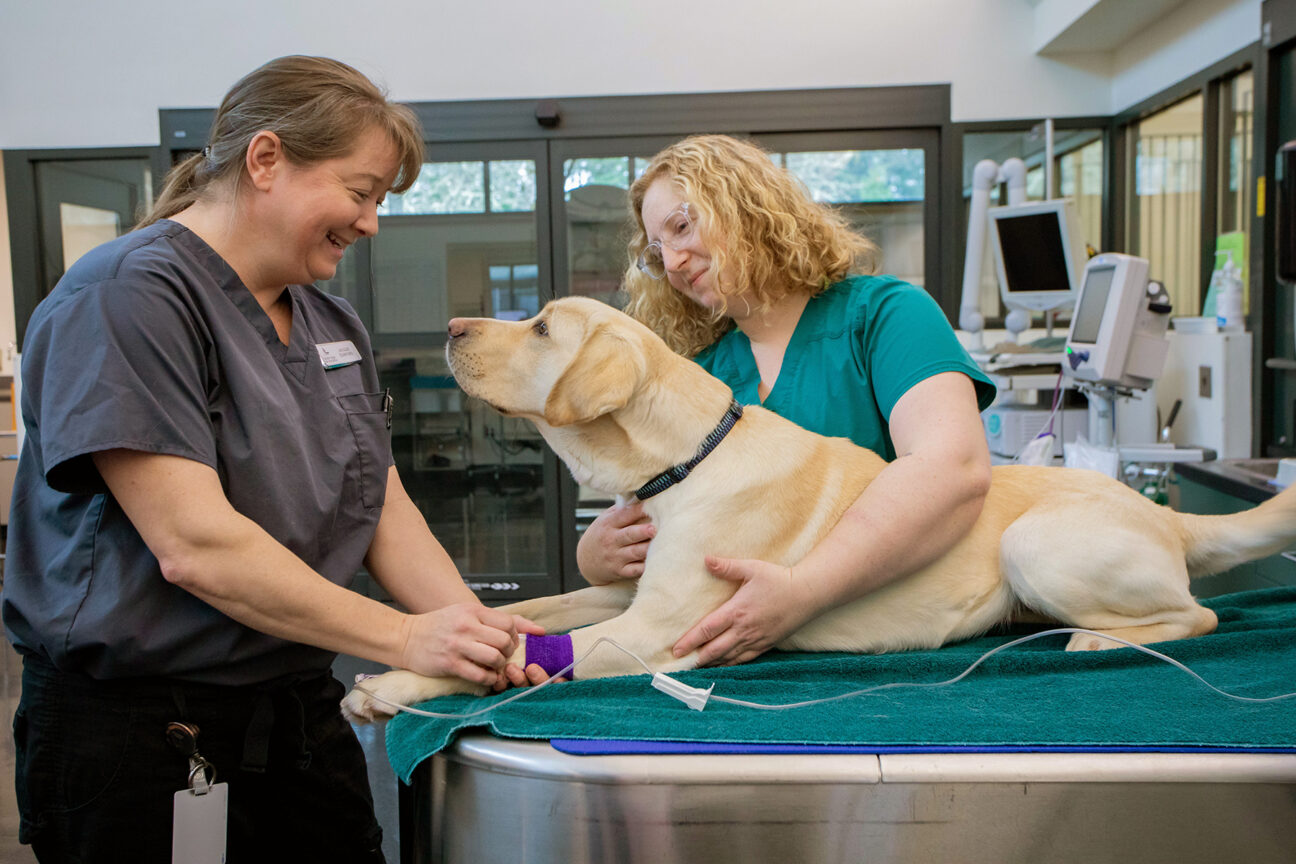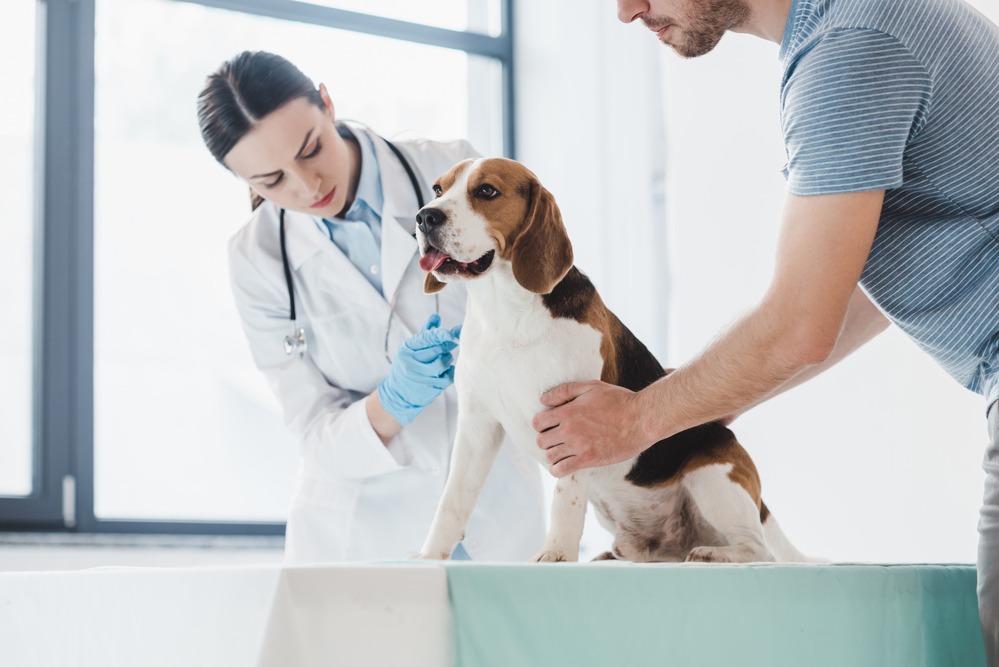Signs Your Pet's Condition Is Serious Enough for an emergency vet
Signs Your Pet's Condition Is Serious Enough for an emergency vet
Blog Article
Why Animal Rehab Is Crucial: the Perks of Veterinarian Services for Your Pet's Recovery
Pet rehabilitation is a crucial component of healing for pet dogs facing injuries or specials needs. Veterinary solutions give critical assistance with customized rehabilitation strategies that resolve private demands. These plans frequently include discomfort monitoring, physical treatment, and nutritional guidance. Recognizing the various aspects of pet rehabilitation can illuminate its significance in enhancing recovery results. What particular benefits do these solutions use, and just how can they change a family pet's recovery journey?
Understanding Pet Rehab
Animal rehabilitation includes a variety of restorative techniques targeted at bring back the wellness and capability of damaged or disabled pets. This area incorporates different techniques, including physical therapy, hydrotherapy, and work-related treatment, tailored to fulfill the specific needs of each animal. Rehab professionals evaluate a pet's condition, creating personalized treatment plans that may include exercises to strengthen muscular tissues, improve wheelchair, and enhance overall well-being. The process not only concentrates on physical recovery but also addresses psychological and behavioral facets. Animals frequently experience stress and anxiety and anxiety adhering to an injury, making psychological wellness factors to consider necessary in rehabilitation. By developing a helpful setting, therapists can assist pets regain their self-confidence and adjust to their brand-new conditions. Through normal sessions, animals can experience considerable improvements, eventually bring about a better lifestyle. Overall, recognizing animal rehab highlights its relevance in promoting recovery and improving the bond in between pets and their proprietors.
The Function of Discomfort Monitoring in Recovery
How vital works discomfort administration in the healing of injured animals? It plays a vital duty in facilitating healing and improving the overall well-being of pets. Appropriate discomfort monitoring not only eases discomfort but also advertises mobility, enabling pets to take part in recovery activities essential for recovery. When pain is efficiently managed, animals often tend to respond positively to therapy, causing quicker rehabilitation outcomes.Veterinarians utilize numerous approaches to analyze and resolve pain, consisting of medicines, acupuncture, and alternate therapies. By tailoring discomfort management approaches to the specific needs of each pet, vets can assure that pets continue to be calm and cooperative throughout their recuperation journey. Lessening pain assists decrease stress, which can prevent recovery and lengthen healing times. To sum up, effective pain administration is essential for enhancing the recovery process and boosting the lifestyle for damaged animals.
Physical Therapy Strategies for Pets
Various physical therapy methods are offered to aid in the rehabilitation of pets recuperating from injuries or surgeries (tplo surgery for dogs). These methods can enhance flexibility, relieve pain, and advertise healing. Restorative exercises, for example, aid enhance muscles and improve joint function, enabling animals to regain their physical capabilities slowly. Hands-on treatment, that includes massage therapy and mobilization, can reduce tension and improve circulation, adding to a faster recovery.Other techniques such as passive variety of activity workouts urge joint adaptability and decrease stiffness. Additionally, electrical stimulation treatment might be utilized to boost nerves and muscles, promoting healing and pain relief.Veterinary specialists usually tailor these strategies to each family pet's certain requirements, guaranteeing a thorough rehab strategy. By executing these physical therapy techniques, pet dogs can experience improved lifestyle and a more successful healing from their ailments. The assimilation of these techniques right into rehabilitation programs is essential for optimal healing results
Benefits of Hydrotherapy for Rehabilitation
Hydrotherapy provides considerable advantages in pet recovery, specifically in boosting movement. This water-based therapy advertises pain alleviation while offering convenience to hurt or recuperating pet dogs. Additionally, it assists in strength-building exercises that add to general physical healing.
Boosted Wheelchair Improvement
As animals recuperate from injuries or surgeries, enhanced movement frequently comes to be a key objective of their rehabilitation. Hydrotherapy acts as a valuable device in accomplishing this purpose. Via water-based exercises, pets can engage in low-impact motions that promote joint mobility and strengthen muscular tissues without the stress and anxiety of weight-bearing tasks. The buoyancy of water supports their bodies, permitting boosted range of activity and flexibility enhancement. In addition, hydrotherapy motivates far better equilibrium and coordination, which are crucial for restoring typical movement patterns. Regular sessions can bring about substantial progression in an animal's physical capabilities, ultimately improving their top quality of life. This approach not just help in recuperation however likewise promotes a more energetic and meeting way of living post-rehabilitation.
Discomfort Alleviation and Comfort

Remedy for discomfort is an important element of animal rehab, and hydrotherapy considerably adds to this process. By utilizing water's buoyancy, hydrotherapy reduces joint stress and anxiety and minimizes pain throughout movement. This healing approach provides a comforting atmosphere where pets can participate in gentle workouts without the full weight of their bodies affecting their healing. The cozy water boosts blood circulation, advertising healing while also motivating relaxation. Furthermore, hydrotherapy sessions can be customized to meet the details demands of the animal, making certain suitable comfort. As pet dogs experience minimized discomfort and increased comfort levels, their total desire to take part in recovery activities often enhances, leading to a more reliable healing journey. As a result, hydrotherapy works as an essential tool in enhancing discomfort alleviation and convenience during recovery.
Strength Structure Workouts
Strength-building workouts play a vital role in the rehab procedure, with hydrotherapy offering distinct benefits. This kind of therapy makes use of water resistance to boost muscle mass strength without placing excessive stress on the joints. The buoyancy of water sustains the pet's weight, permitting for more secure motion and enhanced range of activity. Additionally, hydrotherapy can improve cardiovascular wellness and advertise overall fitness, assisting in quicker healing from injuries or surgeries. The controlled environment additionally decreases the risk of reinjury, making it a suitable choice for pet dogs requiring rehabilitation. Routine hydrotherapy sessions can result in visible renovations in movement, strength, and endurance, inevitably boosting the pet dog's lifestyle and ability to return to regular tasks.
Relevance of Customized Rehab Strategies
Custom-made rehab strategies are necessary for resolving the unique needs of each animal, ensuring individualized therapy approaches. These strategies permit efficient development tracking and essential adjustments, promoting optimal healing end results. Additionally, an alternative method can improve the total health of the pet, promoting a more extensive rehab experience.
Individualized Treatment Approaches
While numerous recovery programs embrace a one-size-fits-all technique, the distinct requirements of each animal demand personalized therapy plans for suitable recovery. Custom-made rehab plans take into account different variables, consisting of the animal's types, age, medical background, and certain injuries or problems. By customizing treatments, vets can address each family pet's unique difficulties, optimizing the effectiveness of the recovery process. Individualized plans may include different methods such as physical treatment, hydrotherapy, and restorative exercises, making certain that the therapy straightens with the pet's capabilities and development. Additionally, customized methods cultivate a stronger bond between the animal and the caregiver, promoting an extra appealing and Home Page supportive healing atmosphere. Eventually, individualized therapy is vital for accomplishing ideal feasible results in pet recovery.
Progress Tracking and Adjustments

Holistic Recovery Techniques
Alternative healing techniques are vital for reliable pet rehab, as they emphasize the value of customized treatment plans customized to each pet's certain requirements. This technique considers the physical, emotional, and ecological aspects impacting recuperation. Custom-made rehab strategies may include a mix of physical treatment, dietary counseling, and behavior alterations. By resolving these varied elements, vets can improve the overall wellness of the pet and promote a much faster recovery. Such tailored strategies facilitate a deeper understanding of the pet dog's distinct challenges, leading to much more reliable interventions. Eventually, all natural recuperation strategies not only improve physical health and wellness however additionally contribute to the animal's mental and psychological security, ensuring a complete rehabilitation experience.
The Influence of Nourishment on Recovery
Nourishment plays a necessary function in the recuperation procedure for fixing up animals, frequently figuring out the speed and efficiency of recovery. A healthy diet plan gives the necessary nutrients that support tissue fixing, increase the immune system, and boost total vitality. Protein is particularly important, as it helps in muscle restoring and healing from injuries. Crucial fats, vitamins, and minerals likewise contribute to lowering inflammation and advertising optimal mobile function.Veterinarians frequently highlight the significance of customized nourishment plans, considering each animal's certain demands, age, and health and wellness status. Correct hydration is equally crucial, as liquids assist in vitamins and mineral absorption and assistance in detoxing. By making sure that pet dogs obtain proper nutrition, caretakers can substantially improve their chances of an effective healing, bring about much better long-term wellness outcomes. Ultimately, nutrition functions as a foundational element in the rehabilitation journey, supporting animals in reclaiming stamina and durability post-injury or disease.
Success Stories: Animals Who Prospered After Recovery
Effective recovery tales are plentiful, showcasing the strength of pets that have conquered substantial difficulties. Take, as an example, Bella, a gold retriever that suffered severe injuries from a car mishap. With devoted veterinary treatment and an extensive rehab program, she restored her flexibility and returned to her playful self, much to her owner's joy. Max, an elderly feline diagnosed with arthritis, experienced exceptional improvement with a mix of physical you can find out more treatment and discomfort management. His newfound dexterity allowed him to enjoy his favorite sunbathing areas again. Another motivating situation is that of Coco, a saved greyhound who got rid of anxiety with habits modification and socialization techniques, enabling her to grow in her brand-new home. These success tales exhibit the transformative power of pet rehab, emphasizing that with the best support, family pets can not only recoup yet lead satisfying lives, enhancing the bonds they show their households.
Often Asked Questions
The length of time Does the Rehab Process Usually Consider Family Pets?
The rehab process for family pets typically differs based on the injury or problem, ranging from a couple of weeks to numerous months. Specific progress, treatment kind, and dedication to workouts greatly affect the general period of recuperation.
Exist Any Type Of Risks Connected With Pet Rehabilitation?
Animal rehab might bring risks such as worsening of injuries, improper techniques leading this website to pain, or inadequate tracking throughout recuperation. These factors can hinder development and influence the total performance of the rehabilitation process.

Can All Pets Benefit From Rehab Services?
Not all family pets might call for rehab, however numerous can benefit considerably. Rehab services can enhance wheelchair, ease discomfort, and enhance general wellness, particularly for those recouping from injuries, surgical treatments, or persistent conditions.
Just How Can I Prepare My Pet Dog for Rehabilitation Sessions?

What Signs Indicate My Pet Dog Demands Recovery?
Indications indicating a pet dog might need rehab include difficulty strolling, limping, decreased activity levels, unwillingness to jump, or indications of pain. Observing these actions can trigger proprietors to seek specialist assessment and treatment for their animals.
Report this page